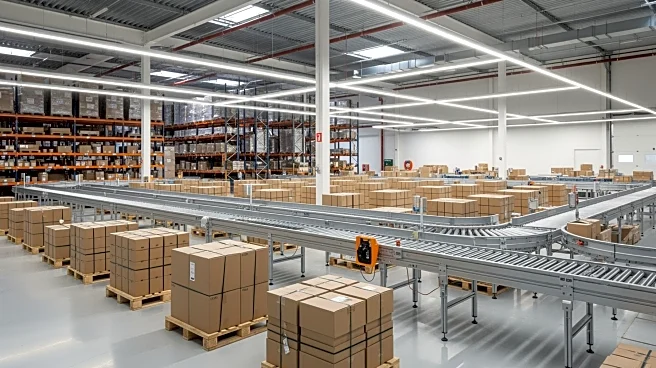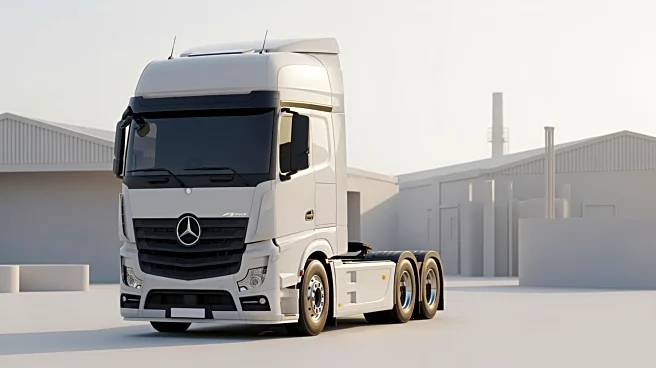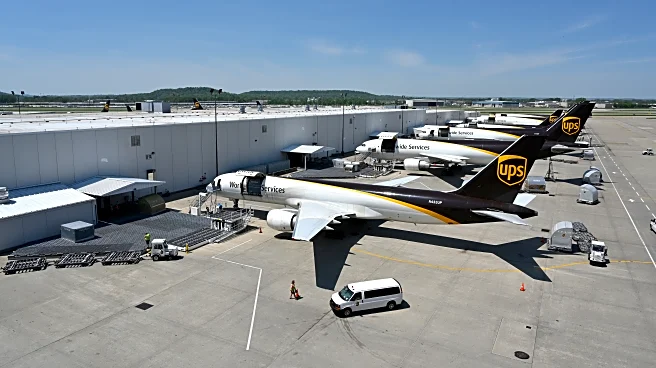What's Happening?
The Association of American Railroads (AAR) has reported a decline in U.S. rail carload and intermodal volumes for the week ending November 1. Rail carloads totaled 227,209, marking a 0.7% decrease compared
to the same period last year. Despite this decline, the figure was higher than the previous weeks ending October 25 and October 18. Among the commodity groups tracked by AAR, grain, metallic ores and metals, and miscellaneous carloads saw annual gains, while coal, motor vehicles and parts, and nonmetallic minerals experienced declines. Intermodal containers and trailers fell by 6.4% annually, with 269,719 units reported. Year-to-date figures show a 1.9% increase in rail carloads and a 2.8% rise in intermodal units.
Why It's Important?
The decline in rail carload and intermodal volumes reflects broader economic challenges impacting the transportation sector. Rail transport is a critical component of the U.S. supply chain, and fluctuations in these volumes can signal shifts in industrial activity and consumer demand. The decrease in coal and motor vehicle shipments may indicate reduced production or demand in these sectors, potentially affecting related industries and employment. Conversely, the increase in grain shipments suggests strong agricultural output, which could benefit farmers and related businesses. Understanding these trends helps stakeholders anticipate changes in logistics needs and economic conditions.












